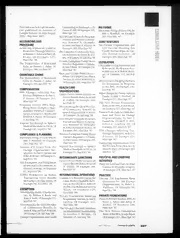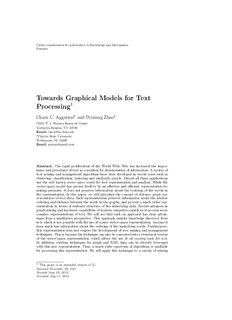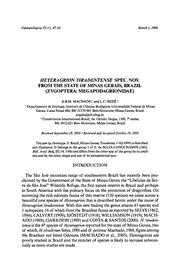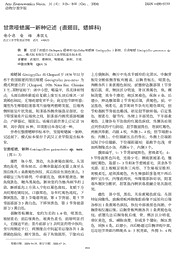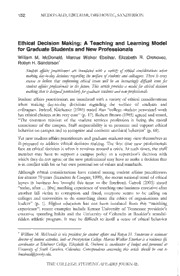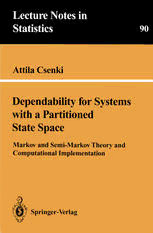
Dependability for Systems with a Partitioned State Space: Markov and Semi-Markov Theory and Computational Implementation PDF
Preview Dependability for Systems with a Partitioned State Space: Markov and Semi-Markov Theory and Computational Implementation
Lecture Notes in Statistics 90 Edited by S. Fienberg, J. Gani, K. Krickeberg, 1. OIkin, and N. Wennuth Attila Csenki Dependability for System.s with a Partitioned State Space Markov and Semi-Markov Theory and Computational Implementation Springer-Verlag New York Berlin Heidelberg London Paris Tokyo Hong Kong Barcelona Budapest Attila Csenki Department of Computer Science and Applied Mathematics Aston University Aston Triangle. Birmingham B4 7Ef Great Britain Library of Congress Cataloging-in-Publication D:lfa Csenki, Attila. Dependability for systems with a partitioned state space: Markov and semi-Markov theory and computational implementation 1 Attila Csenki. p. COl. --(Lecture notes in statistics; 90) Includes bibliographical references and index. ISBN-13: 978-0-387-94333-6 1. Reliability (Engineering)--Mathematical models. 2. Markov processes. I. Title. II. Series: Lecture notes in statistics (Springer-Verlag) ; v. 90. TA169.C73 1994 620' .00452'01176--dc20 94-25788 Printed on acid-free paper. © 1994 Springer-Verlag New York, Inc. All rights reserved. lbi.s work may not be translated or copied in whole orin part without the written permission of the publisher (Springer-Verlag New York, Inc., 175 Fifth Avenue, New York. NY 10010, USA), except for brief excerpts in connection with reviews or scholarly analysis. Use in connection with any form of information storage and retrieval. electronic adaptation, computer software, or by similar or dissimilar methodology now known or hereafter developed is forbidden. The use of general descriptive names, trade names, trademarks, etc., in this publication, even if the former are not especially identified, is not to be taken as a sign that such names, as understood by the Trade Marks and Merchandise Marks Act, may accordingly be used freely by anyone. Camera ready copy provided by the author. 9 8 7 6 5 432 1 ISBN-I 3: 978-0-387-94333-6 e-ISBN-13: 978-1-4612-2674-1 DOl: 10.1007/978-1-4612-2674-1 PREFACE Probabilistic models of technical systems are studied here whose finite state space is partitioned into two or more subsets. The systems considered are such that each of those subsets of the state space will correspond to a certain performance level of the system. The crudest approach differentiates between 'working' and 'failed' system states only. Another, more sophisticated, approach will differentiate between the various levels of redundancy provided by the system. The dependability characteristics examined here are random variables associated with the state space's partitioned structure; some typical ones are as follows • The sequence of the lengths of the system's working periods; • The sequences of the times spent by the system at the various performance levels; • The cumulative time spent by the system in the set of working states during the first m working periods; • The total cumulative 'up' time of the system until final breakdown; • The number of repair events during a fmite time interval; • The number of repair events until final system breakdown; • Any combination of the above. These dependability characteristics will be discussed within the Markov and semi-Markov frameworks. In Chapter 1, we give a concise summary of the required theoretical background in the theory of stochastic processes and introduce those engineering systems (mainly from the power engineering field) which will serve us to demonstrate the practical potential of the theoretical results. Chapters 2 and 3 are devoted to discrete-parameter Markov chains. They are of interest for two reasons. First, they can be used to model the sequence of events in a discrete-parameter system. Second, they will be seen in Chapter 4 to be useful in a mathematical sense by allowing a key continuous-time result to be derived essentially as a corollary to the discrete parameter formulation. Chapters 4 -7 are devoted to continuous-time Markov chains. The main tool here is Laplace transforms. In most cases it will be possible to represent the result in the time domain by explicit Laplace transform inversion. The second technique, used in Chapter 6, is randomization (also called 'uniformization') which replaces the finite Markov process by a Poisson process and an independent discrete-time Markov chain. The former generates the holding times whereas the latter marks the sequence of state transitions in the state space of the original process. (Self-transitions for the new chain are possible.) Chapters 8 - 12 explore essentially the same kind of questions for semi-Markov processes. Closed form solutions in the time domain are not feasible here. However, numerical and symbolic Laplace transform inversion are possible given the right set of software tools. Three software environments were used to implement the examples • The matrix computation system MAT LAB on the Apple Macintosh; • The NAG FORTRAN 77 subroutine library on the V AX; • The computer algebra system MAPLE on the Apple Macintosh. vi Those features of the above systems are explained which were thought to be useful for their first appreciation by the reliability practitioner. Some code is also shown where it was deemed instructive. An informal discussion of future research topics is given in the Postscript. This monograph is a coherent and self-contained account of one particular aspect of my research in reliability theory over the last couple of years. Work on the material presented here has started during my stay (1987-1990) as a research fellow with the Centre for Software Reliability, The City University, London. Most of the material was researched in my present employment at Aston University, Birmingham, where I have been a lecturer in the Department of Computer Science and Applied Mathematics since January 1990. This monograph is a Habilitation thesis for the Faculty of Mathematics and Natural Sciences of the Bergakadernie Freiberg, Saxony, Federal Republic of Germany. I am most grateful to Professor Stoyan from the Bergakadernie Freiberg for supporting me as an external candidate and his interest in this work. Birmingham, April 1994 Attila Csenki CONTENTS page 1 Stochastic processes for dependability assessment 1.1 Markov and semi-Markov processes for dependability assessment 1 1.2 Example systems 5 1.2.1 Markov models 5 1.2.2 Semi-Markov models 12 2 Sojourn times for discrete-parameter Markov chains 14 2.1 Distribution theory for sojourn times and related variables 14 2. 1.1 Key results: sojourn times in a subset of the state space 14 2.1.2 Distribution theory for variables related to the sojourn time vector 28 2. 1.3 The joint distribution of sojourn times in A 1 and A2 by the generalised renewal argument 37 2.1.4 Tabular summary of results about sojourn times and related variables 41 2.2 An application: the sequence of repair events for a three-unit power transmission model 41 2.2.1 The number of major repair events Rn in a repair sequence oflenght n 42 2.2.2 Numerical results 44 2.2.3 Implementation withMATLAB 48 2.2.4 MATLAB code 50 3 The number of visits until absorption to subsets of the state space by a discrete-parameter Markov chain: the multivariate case 53 3. 1 The probability generating function of M and the probability mass function of L 54 3.2 Further results for n E { 2,3 } 57 3.3 Tabular summary of results in Sections 3.1 and 3.2 62 3.4 A power transmission reliabilty application 63 3.4.1 Numerical results 63 3.4.2 MATLAB code 65 4 Sojourn times for continuous-parameter Markov chains 69 4.1 Distribution theory for sojourn times 70 4.2 Some further distribution results related to sojourn times 90 4.3 Tabular summary of results in Sections 4.1 and 4.2 97 4.4 An application: further dependability characteristics of the three-unit power transmission model 98 4.4.1 Numerical results 98 4.4.2 MATLAB code 103 viii 5 The number of visits to a subset of the state space by a continuous- parameter irreducible Markov chain during a finite time interval 106 5.1 ThevariableMA,(t) 106 5.1.1 The main result 106 5.1.2 The proof of Theorem 5.1 108 5.2 An application: the number of repairs of a two-unit power transmission system during a finite time interval 118 5.2.1 Numerical results and implementation issues 118 5.2.2 MATLAB code 119 6 A compound measure of dependability for continuous-time Markov models of repairable systems 122 6.1 The dependability measure and its evaluation by randomization 123 6.2 The evaluation of ~(k, i, n) 125 6.2.1 The auxiliary absorbing Markov chain X(k) 126 6.2.2 The closed form expression for ~(k, i, n) 127 6.3 Application and computational experience 133 6.3.1 Computational implementation 133 6.3.2 Application: two parallel units with a single repairman 133 6.3.3 Implementation in MATLAB 135 6.3.4 MATLAB code 135 7 A compound measure of dependability for continuous-time absorbing Markov systems 141 7.1 The dependability measure 141 7.2 Proof of Theorem 7.1 143 7.2.1 Proof outline 143 7.2.2 An auxiliary result 144 7.2.3 Proof details 144 7.3 Application: the Markov model of the three-unit power transmission system revisited 149 8 Sojourn times for finite semi-Markov processes 151 8.1 A recurrence relation for the Laplace transform of the vector of sojoum times 152 8.2 Laplace transforms of vectors of sojourn times 153 = 8.2.1 S is partitioned into three subsets (n 2) 153 = 8.2.2 S is partitioned into four subsets (n 3) 160 8.3 Proof of Theorem 8.1 163 9 The number of visits to a subset of the state space by an irreducible semi-Markov process during a finite time interval: moment results 167 9.1 Preliminaries on the moments ofMA,(t) 167 IX 9.2 Main result: the Laplace transform of the measures U Q. 169 9.3 Proof of Theorem 9.2 171 9.4 Reliability applications 176 9.4.1 The alternating renewal process 176 9.4.2 Two units in parallel with an arbitrary change out time distribution 176 10 The number of visits to a subset of the state space by an irreducibe semi-Markov process during a finite time interval: the probability mass function 179 10.1 The Laplace transform of the probability mass function of MAl (t) 179 10. 1.1 A recurrence relation in the Laplace transform domain 179 10. 1.2 The direct computation of Laplace transforms 182 10.2 Numerical inversion of Laplace transforms using Laguerre polynomials and fast Fourier transform 183 10.2.1 A summary of the numerical Laplace transform inversion scheme 183 10.2.2 The inversion scheme in the NAG implementation 186 10.3 Reliability applications 187 10.3. 1 The Markov model of the two-unit power transmission system revisited 187 10.3.2 The two-unit semi-Markov model revisited 189 10.4 Implementation issues 192 10.4.1 The NAG library 192 10.4.2 Input data file and FORTRAN 77 code for the Markov model 193 10.4.3 MATLAB implementation ofthe Laplace transform inversion algorithm 203 10.4.4 MATLAB code 204 11 The number of specific service levels of a repairable semi-Markov system during a finite time interval: joint distributions 205 11. 1 A recurrence relation for b( t; m 1, m2) in the Laplace transform domain 205 11.2 A computation scheme for the Laplace transforms 209 12 Finite time-horizon sojourn times for finite semi-Markov processes 212 12.1 The double Laplace transform of finite-horizon sojourn times 213 12.2 An application: the alternating renewal process 221 12.2.1 Laplace transforms 221 12.2.2 Symbolic inversion with MAPLE and computational experience 224 12.2.3 MAPLE code 229 Postscript 231 References 235 Subject index 240 CHAPTER 1 STOCHASTIC PROCESSES FOR DEPENDABILITY ASSESSMENT The view taken in this monograph is that Reliability Theory is essentially an application of the theory of stochastic processes. However, the real life context in which Reliability Theory exists must also be given due consideration for three reasons. First, the theory serves a well-defined purpose: to assist in the modelling of technical systems as far as their dependability aspects are concerned. Second, there is ample scope for fertilization with ideas in the other direction. This latter point is relevant in particular for our subject since new technical systems in need of assessment from a reliability point of view are emerging with predictable regularity. Finally, the evolution of the reliability field is considerably influenced by the rapid development of the computational tools it uses (both software and hardware). Thus even though the present work is essentially a mathematical treatise, the intention was to make it of some benefit also to the reliability engineer who is perhaps more interested in how new theory might assist him in the analysis of actual systems rather than in the theory itself. In this first chapter, in addition to an informal summary of the results, the notation is established and the prerequisites from the (elementary) theory of stochastic processes are reviewed. The presentation is deliberately restricted to those aspects of the theory which will be used subsequently. The application examples are mainly power transmission reliability models. 1.1 Markov and semi-Markov processes for dependability assessment From the large number of references on this, we would like to single out Birolini's books [BIRl] and [BIR2] for their broad coverage of the topic. The books by Bhat [BHA2, Chapter 15], Kohlas [KOH], and losifescu [lOS] are more mathematical, whereas those by Beasley [BEA], Frankel [FRA], Grosh [GRO], Klaassen and Peppen [KLA], and Lewis [LEW] are for the reliability engineer. We shall be concerned in this work with models of technical systems which evolve over time. Usually, systems are considered at various levels of abstraction. At the highest level, the system is thought of as one unit which is either working (then commonly referred to as being in the 'up-state') or is idle (then also said to be 'down'). In most cases it is expedient to look at a system more closely and to identify its subsystems and their interdependence. It will then be possible to build a mathematical model of the system based on the knowledge of the behaviour of its subsystems. Failure of (sub)systems is deemed to be random, and that is why probability modelling is so important in reliability work. Discrete-time Markov models are used to describe systems which evolve in time but for which the actually elapsed time between the events of interest is immaterial: the sequence of events is essential. The state space S of our models will be finite. Informally, a discrete = { = parameter Markov process Z Zn : n 0, 1, ... } with state space S can be thought of as the model of a particle moving around randomly in S, where Zn E S stands for its position just after the nth step. This 'random' movement is governed by a probabilistic law: if the process is in s E S after the nth step, the next state to be occupied will be rES with probability Pr{ Zn+l 2 = r I Zn = s } = qsr E [0, 1]. If (as it will be assumed throughout) these probabilities are independent of n, the process Z is said to be homogeneous. The qsr are entries of the transition = { probability matrix Q qsr: S, rES }. Obviously, the row-sum of Q is unity, expressed in vector notation as Q 1 = 1, where 1 stands for a column vector of ones (1, ... , 1)T whose = number of entries matches the size of Q. The state space S will be partitioned as S Al U A2, or alternatively, as S = Al U A2 U {W} with pairwise disjoint sets AI, A2, and {W}. In the former case the Markov chain will be assumed irreducible, i.e., every state has a non-zero probability of being visited from every other state (possibly in more than one step though). Thus, the chain alternates between Al and A2 indefmitely. The latter partition of S arises when Z is absorbing, i.e., once W has been entered into the process stays there indefinitely. Irreducible Markov chains are used to model repairable systems and then AI, say, is the set of working states. Absorbing chains are used to model irrepairable systems; then, W stands for the state 'system breakdown'. In practice the initial system state Zo is well known but for mathematical reasons it is customary to admit the possibility of a random initial state. This is expressed in terms of the initial state vector a = { as: s E S }, as =P r{ Zo =s }, which is a column vector. If it is known that Zo = s then, of course, the only non-zero entry of a is in the sth position and it is unity. According to the partitioning of the state space S both Q and a are written as block partitioned matrices. They are for irreducible and absorbing Z respectively given by (1.1) and Al A2 {W} 1 [QA'A' :Q A,A, Al :Q A"W] Al [~A' : ' I:} -::: ' Q = A2 ~;2~~: Q~2~; ~~2~W! a= (1.2) {w} 0 I 0 I 1 where 0 stands for the zero matrix. Notice that an irreducible Markov chain can be considered = to be a limiting case of an absorbing one by assuming that a w 0 and by letting max { qs w : s E S, S '" W } ~ O. This observation will allow results for irreducible Markov chains to be established from their absorbing counterpart with relative ease. For the quantities under consideration to be easily visualized it is expedient to attach the = following meaning to the sets Al and A2. Al G is the set of all 'good' states, i.e., the ones which correspond to the system being functional; the set A2 = B is the set of all 'bad' states, i.e., those which are associated with the system being 'down'. An irreducible process alternates between G and B indefinitely. The sequences of the lengths of sojourns in G and B will be respectively denoted by { NG,i : i ~ 1 } and { NB,i : i ~ I }. If Zo E G, we have, for example,
The list of books you might like

As Good as Dead

The 48 Laws of Power

Better Than the Movies

The Sweetest Oblivion (Made Book 1)

Выступления полномочного представителя Президента РФ в Конституционном Суде Российской Федерации. 2015–2018 годы. Сборник. Том 2. 2017–2018 годы

Inside the Star Wars empire: making magic at George Lucas's industrial light and magic
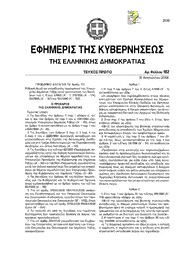
Greek Government Gazette: Part 1, 2006 no. 182
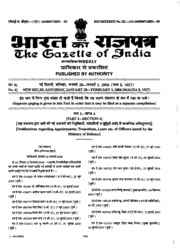
Gazette of India, 2006, No. 81
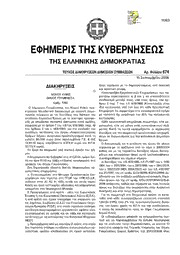
Greek Government Gazette: Part 7, 2006 no. 674

Un coeur en pleine santé : une ressource pour l'éducation physique au secondaire deuxième cycle
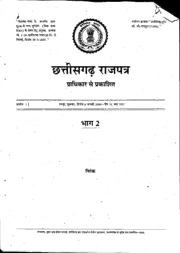
Chhattisgarh Gazette, 2006-01-06, No. 1, Pt. 2
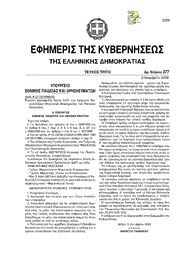
Greek Government Gazette: Part 3, 2006 no. 377
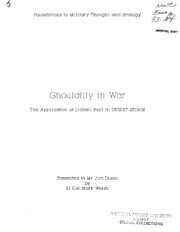
DTIC ADA440730: Ghoulality in War. The Application of Liddell Hart in Desert Storm
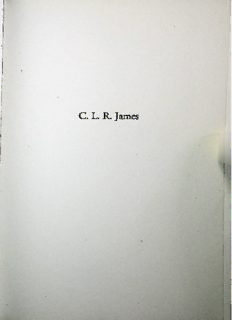
C. L. R. James La vie révolutionnaire d’un "Platon noir"

O liberalismo econômico
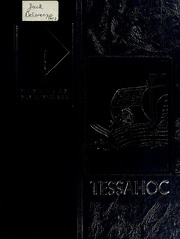
Tessahoc

Dessert Love Sweetplus (Manual)(JP)(PlayStation2)(PS2)

Sexueller Missbrauch an Kindern unter Berücksichtigung präventiver Handlungsmaßnahmen

